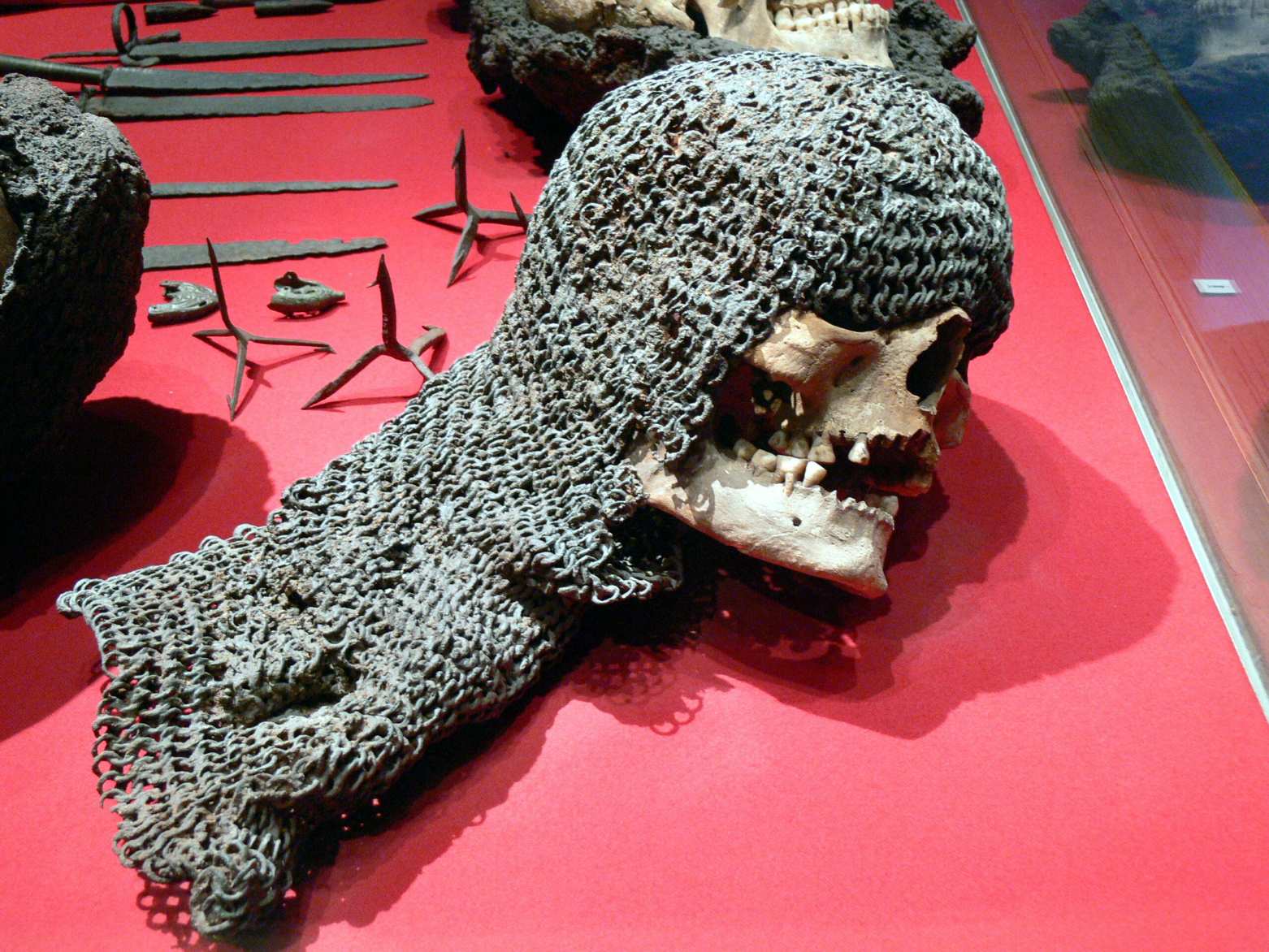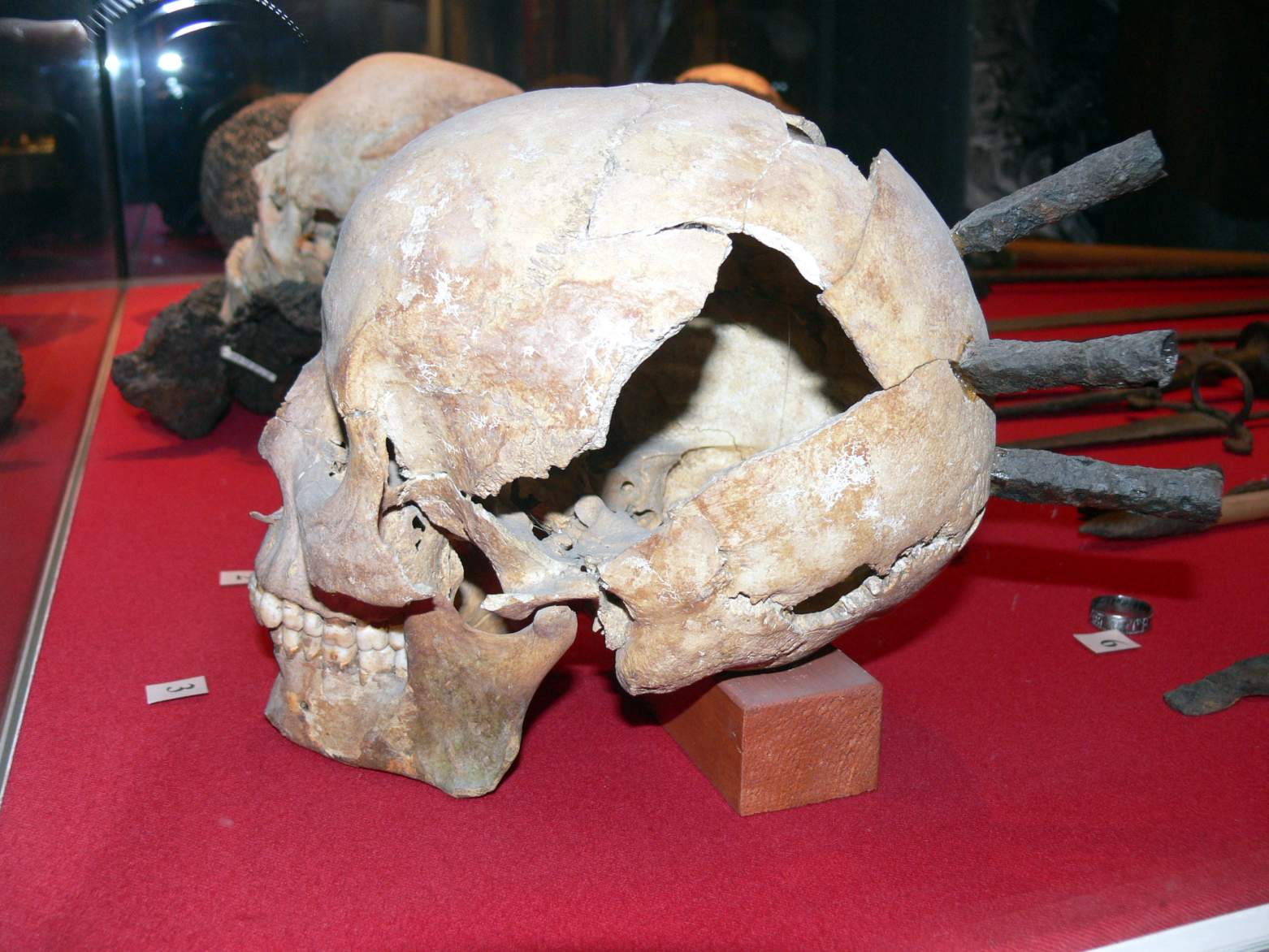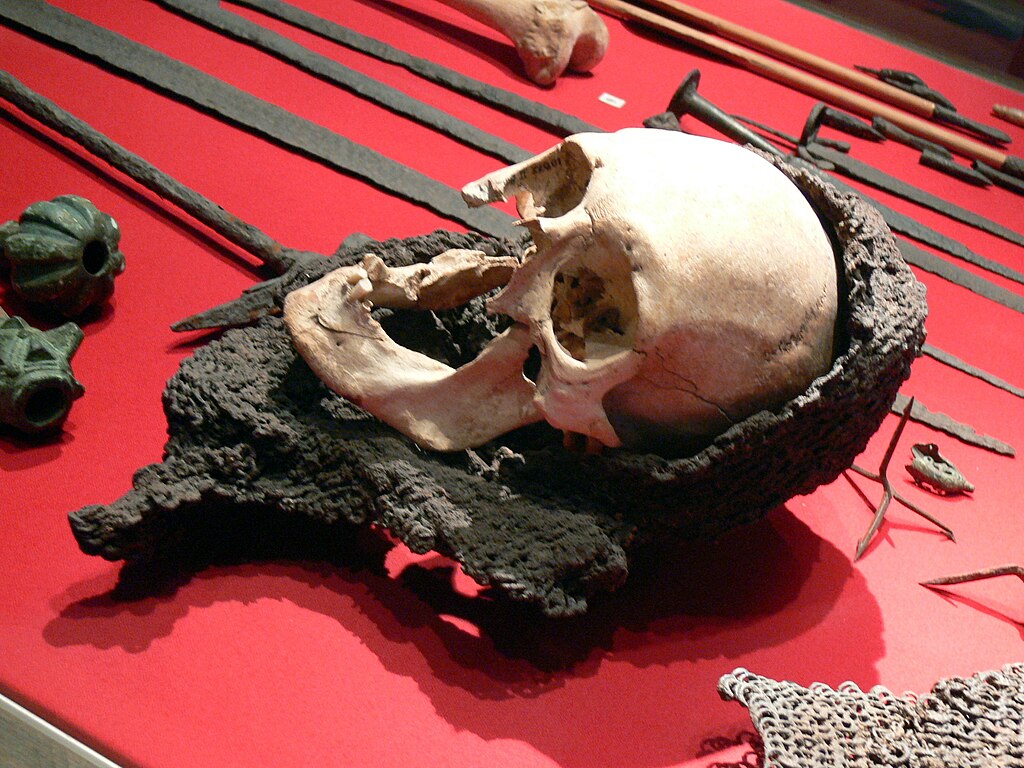The Battle of Visby, located near Visby in Sweden’s Gotland, was a fierce Medieval conflict between the people of Gotland and the Danes, resulting in the latter’s victory.

The bloody aftermath of a fierce battle remained inscribed in the archaeological record with countless victims of war strewn across the former site of combat.
Broken bones, skeletons still clad in their armor and chain mail, and smashed skulls with spears and knives still embedded in them – it’s hard to think of what these poor souls went through before they took their last breaths.
Visby, a merchant’s dream
The small island of Gotland situated off of Sweden’s coast in the Baltic Sea was a major hub for trading between Europe and Russia during the Middle Ages. This activity led to the growth of the city of Visby.
Since the late 13th century, Visby was part of a union of North-western and Central European trading cities, known as the Hanseatic League. This coalition safeguarded the economic interests of its members, and it was also a guard against attack.
Greedy king sets his sight on Visby
Valdemar IV, the King of Denmark, was not pleased with the expansion of the Hanseatic League since it posed a challenge to his country’s commerce. This particular ruler saw the League as a threat to his kingdom.
Valdemar was eager to take possession of the wealth of the League’s municipalities. By the mid-14th century, Visby had dropped in stature, prompting Valdemar to focus his attention on it.
The people of the town were reportedly singing disrespectful drinking songs about the king, which led to him forming a grudge against them.
The Danes’ Invasion

In the summer of 1361, the Danes had prepared a force to sail to Gotland. Having been notified of their impending arrival, the people of Visby prepared for battle. Valdermar’s army eventually arrived on the west side of Gotland in the later part of July 1361.
Between 2000 and 2500 soldiers, most of whom were experienced Danish and German mercenaries, made up the Danish army. In contrast, the Gotlanders who were defending their territory totaled 2000 and were mainly comprised of untrained militia.
The Battle of Visby
This battle, which took place in Visby, Sweden, was fought during the Middle Ages. It was an incredibly important event, as it marked a decisive victory for the Danes over the Gotlanders. The battle was hard-fought, with the Gotlanders putting up a formidable defense. The Danes were eventually victorious though, and their victory sealed the fate of the Gotlanders. This battle would be remembered for centuries to come.
The Gotlanders first made an attempt to stop the progress of the Danish force at Masterby, situated in the middle of the island. However, the defenders were unable to resist, and the Danes kept on going towards Visby. A battle was fought outside the walls of Visby.
Desperately attempting to defend themselves, the militiamen were unable to withstand the superior power of the Danish army. Consequently, the majority of the defenders were slain and the town was forced to yield to Valdemar.
Mass graves and fallen soldiers

Mass graves and fallen soldiers are a stark reminder of the atrocities of war. These unmarked burial sites and departed service members serve as a constant reminder of the harshness of armed conflict.
In the early 20th century, the mass graves of those who perished in battle were discovered and exhumed. These graves had lain undisturbed since the conflict had ended. From 1905 through 1928, the graves were thoroughly investigated.
The excavation of more than 1100 human remains offered an abundance of information regarding the Battle of Visby, such as being able to recognize the weapons used due to the injuries found on the skeletal remains.
Cutting weapons, such as swords and axes, accounted for approximately 450 wounds, whereas 120 wounds were caused by piercing weapons including spears and arrows.
Through the examination of the skeletal remains, it was determined that at least one-third of the defenders of Visby were elderly, young, or handicapped, indicating that the townspeople’s circumstances were desperate.

A speedy burial of the deceased was thought to be the case after the conflict, and so they were buried with the equipment they had when they fought, which included their armament and arms.
The condition of these remains is remarkable, making them a very special archaeological discovery. Despite not having the most advanced arsenal, some chainmail shirts, coifs, gauntlets, and diverse weapons were found amongst the defenders.
The Gotland Museum serves as a memorial to the defenders of Visby, displaying the human and other remains as a permanent reminder of their legacy.
After reading about the discovery of a medieval victim still in chainmail, read about Angel’s Glow: What happened in the Battle of Shiloh in 1862?




